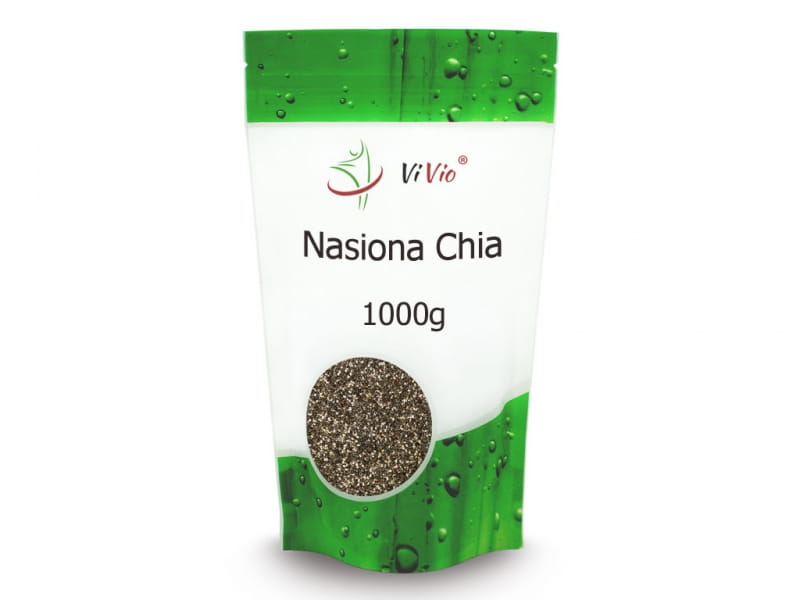Chia seeds 1000g VIVIO
- Regular price
- €12,92
- Regular price
-
- Sale price
- €12,92
- Unit price
- per
Couldn't load pickup availability
Description
xHow do I use chia seeds?
You shouldn't eat more than two tablespoons of chia seeds per day. Under the influence of water or other liquids, they even increase their volume by a factor of twelve. Too much of it can make it difficult to absorb other valuable nutrients from food. In addition, the permitted amount of these seeds in food sold on the shelves of the European Union should not exceed 10%. How do you eat chia seeds? Scientific research emphasizes that the consumption of chia seeds in the form of ground or in the form of oil increases the absorption of their lipids.How else do you prepare chia seeds? You can soak whole grain products beforehand or add them directly to bread, dough or porridge. What else can you make with chia seeds? They perfectly harmonize with different types of cocktails and smoothies. By topping them up with plant-based milk or juice and adding your favorite fruit, you get a low-calorie, fit-for-your-buck dessert.
You can add them to:
- cocktails,
- puddings,
- salads, pancakes, omelettes, grits,
- muesli, cereals, porridge,
- Ground can be added to bake bread, cakes or pancakes or as a substitute for breadcrumbs,
- From ground seeds you can make pudding,
- eat, as a snack or sprinkle on sandwiches,
- Crush and use as a grain powder as a thickener for soups and sauces,
- Can be added hot or cold to jams, oatmeal, yogurts, salads and other preserves.
Ingredients: Chia seeds (Salvia hispanica L.)
The consumption of Spanish sage seeds should not be more than 15 g per day.

"References of nutritional value for an average adult
(8,400kJ / 2,000kcal).
Store cool and dry.
What do Spanish sage seeds contain?
In addition to being high in omega-3 fatty acids, chia seeds are also a treasure trove of protein (16-26%) and carbohydrates (37-42%), including fiber. The protein content is higher than in such popular grain products as corn, wheat or rice. However, it all depends on the area where Spanish sage is grown. In growing areas that are high above sea level, it is observed at low temperatures that the protein content of chia seeds is lower. Chia seeds are also a source of fiber, which induces a feeling of satiety and has a positive effect on the functioning of the digestive system. There is a lot more of it in chia seeds than in dried fruit or grains. Spanish sage seeds also have antioxidant properties thanks to ingredients such as caffeic acid, chlorogenic acid, quercitin and kaempferol. The antioxidant activity of chia seeds is scientifically comparable to that of coffee and tea. In addition, the inconspicuous grains provide many B vitamins and minerals (mainly phosphorus and calcium). They're also a source of iron, and there's a lot more of that than in wheat and spinach.
similar products
- Regular price
- €12,92
- Regular price
-
- Sale price
- €12,92
- Unit price
- per
- Regular price
- €12,92
- Regular price
-
- Sale price
- €12,92
- Unit price
- per
- Regular price
- €12,92
- Regular price
-
- Sale price
- €12,92
- Unit price
- per
- Regular price
- €12,92
- Regular price
-
- Sale price
- €12,92
- Unit price
- per
- Regular price
- €12,92
- Regular price
-
- Sale price
- €12,92
- Unit price
- per
- Regular price
- €12,92
- Regular price
-
- Sale price
- €12,92
- Unit price
- per
- Regular price
- €12,92
- Regular price
-
- Sale price
- €12,92
- Unit price
- per
- Regular price
- €12,92
- Regular price
-
- Sale price
- €12,92
- Unit price
- per
- Regular price
- €12,92
- Regular price
-
- Sale price
- €12,92
- Unit price
- per
- Regular price
- €12,92
- Regular price
-
- Sale price
- €12,92
- Unit price
- per
Recently Viewed Products
- Regular price
- €12,92
- Regular price
-
- Sale price
- €12,92
- Unit price
- per
- Regular price
- €12,92
- Regular price
-
- Sale price
- €12,92
- Unit price
- per
- Regular price
- €12,92
- Regular price
-
- Sale price
- €12,92
- Unit price
- per
- Regular price
- €12,92
- Regular price
-
- Sale price
- €12,92
- Unit price
- per
- Regular price
- €12,92
- Regular price
-
- Sale price
- €12,92
- Unit price
- per
- Regular price
- €12,92
- Regular price
-
- Sale price
- €12,92
- Unit price
- per
- Regular price
- €12,92
- Regular price
-
- Sale price
- €12,92
- Unit price
- per
- Regular price
- €12,92
- Regular price
-
- Sale price
- €12,92
- Unit price
- per
- Regular price
- €12,92
- Regular price
-
- Sale price
- €12,92
- Unit price
- per
- Regular price
- €12,92
- Regular price
-
- Sale price
- €12,92
- Unit price
- per
- Choosing a selection results in a full page refresh.











